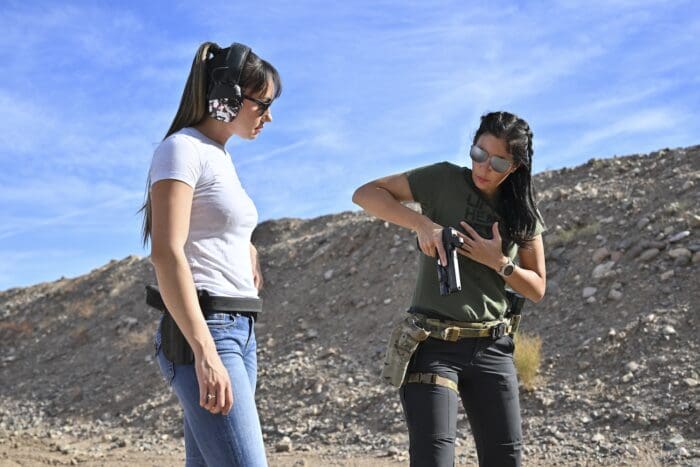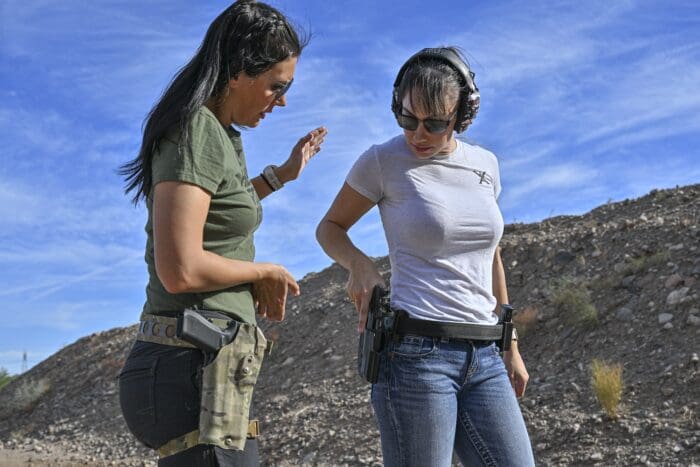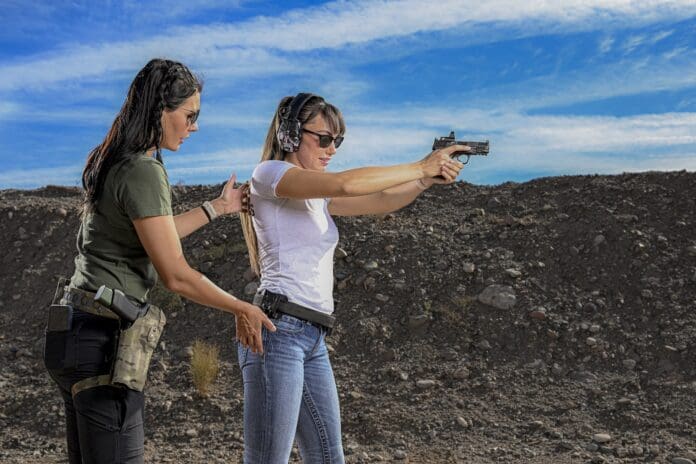Our decision to carry is an important one and should always be regarded with a serious sense of responsibility. I carry and if you’re reading this, there’s a good chance you carry or are considering doing so. Heck, a lot of people carry—more than some of us realize—which is why many of us carry concealed. We’re not interested in trumpeting it to the world.
Over the years, I’ve spent countless hours and days in classes designed to educate law-abiding gun owners on how to properly and safely exercise our constitutional right to bear arms and to carry according to state laws and regulations. In these classes, we are educated on what might happen during a fatal defensive encounter and how to best respond. Of course, we spend a considerable amount of time practicing the shooting process, including how to identify and engage threats properly and accurately, which is the cornerstone to successfully ending a life-threatening encounter without injuring innocent bystanders. These classes are a critical part of a defensive-minded gun owner’s education.
There’s no polite way to say it, but if you’re going to carry, you need to train and practice. By train, I don’t mean taking occasional trips to the local range to punch holes in paper targets. That’s more like practice. By train I mean attending an accredited shooting or defensive class from reputable instructors and then practicing what you learn. Although this is not a requirement in most states, you should consider requiring it of yourself if you are serious about the role you have accepted as an individual carrying a firearm.
I Only Need One
Years ago, I worked closely with an individual who took a serious interest in firearms, particularly pistols. We would go to the range and shoot. While I did my best to introduce him to techniques that might be useful to him as a licensed carrier, he was not interested in learning. He felt simply plinking at targets was sufficient. His response when I would press him on the issue was, “I only need one bullet,” as he would slowly take aim while closing one eye.
I’m certainly not implying that you need to be a tactician, but if someone chooses to make you a victim of a violent crime, time will not be on your side. Criminal attacks often occur quickly and unexpectedly. Slow, calm aiming and manipulation of the trigger will likely not be possible. It’s imperative that you are able to respond decisively and quickly with force that is focused and appropriate, within legal parameters, and executed with confidence and competence. The only way this can happen is with knowledge garnered from proper instruction and repetition of the skills learned during that instruction.
The best way to build and maintain your skillset is to attend training classes. They are available all over the nation, and many have multiple levels starting at level one where the instruction is basic and focuses on individuals who are new to carrying or shooting. Classes can go up to level three and beyond, which provide a more advanced curriculum for gun owners who wish to continue improving their training. Receiving more training, especially classes that include information on operating within the boundaries of the law, will not only help you become more proficient but moreconfident in when and how you can respond in a defensive situation. That training even extends to understanding the law.
Richard D. Hayes II, a partner in the Texas law firm Walker & Taylor and an Independent Program Attorney with U.S. LawShield, explains the importance of not only being knowledgeable about the use of a firearm but being knowledgeable about the laws that surround its appropriate use.
“Being vaguely familiar with gun and self-defense laws is simply not enough; you have to understand the law, its limits and what conduct will land you in hot water because ignorance of the law is not an excuse,” Hayes says.
You may be wondering if it is even necessary for you, or how many classes you’d have to take, but consider this: How important is it to you and your loved ones that you respond appropriately in that decisive moment? What is your life, your significant other’s life or your child’s life worth? How important is it that you can defend them and do so without hurting others who aren’t involved? How important is it for you to think clearly and without panic so that you don’t make a decision that will land you in jail? Is it worth 8, 10 or even 15 hours a year? It’s likely you agree that it is.

Benefits
Solid training leads to several things, the most important is creating in you, the gun owner, a sense of awareness and confidence that may not have been present before. While you’ll be vigilant, you’ll also feel more control over your environment that comes from the ability to assess certain situations and know how to respond. The primary response should virtually always be avoidance. While we need to be able to defend ourselves in a competent way, we shouldn’t want such a situation to occur.
Training will help you develop proper and safe firearms handling skills. For instance, there are many ways to carry a firearm for personal protection. Are you aware of the various holsters and their advantages and disadvantages? Do you know the difference between inside-the-waistband (IWB) and outside-the-waistband (OWB) carry techniques? Should you look for holsters made of leather or Kydex? Have you considered retention features in your holster?
This is just the beginning, and it’s only dealing with holsters. A good holster is necessary for safe weapons carry, transport and manipulation and an unintended discharge by someone not familiar with how to properly carry or handle their firearm can result in serious legal ramifications.
Training can also help you to gain an understanding of your firearm and ammunition and what their capabilities truly are. It’s imperative to carry proper self–defense ammunition that is designed to prevent overpenetration, which could result in innocent bystanders being harmed, and you being charged criminally or sued civilly. Some states even have legal requirements for the type of ammunition you are permitted to use in your carry gun. Defensive ammunition, typically using hollow-point bullets, is designed to perform differently than your garden variety practice ammunition, which is typically loaded with full-metal jacket, ball or wadcutter bullets. It’s important to understand the differences.

Perfect Practice Makes Perfect
Practicing the wrong way over and over only reinforces bad and potentially harmful habits. Proper practice creates safe and effective habits and execution. It’s hard to know what to practice if you haven’t been instructed on best practices.
Training courses are invaluable and can even be a lot of fun. Some people even turn their training into full blow vacations by scheduling courses as such famed places as Gunsite Academy in Pauline, Ariz., Thunder Ranch in Lakeview, Ore., or Sig Sauer Academy in Epping, N.H.
After attending a training class, it’s important to keep your skills sharp. Frequent trips to the range with a practice plan are critical. What is frequent? That is, of course, a matter of opinion. Keep in mind, firearms proficiency is a perishable skill. At the very least, a monthly practice session is a good starting point. Then you can work in twice monthly or even once weekly training if your schedule and resources permit. There are also specific dry-fire drills you can perform right in your home whenever you have the chance that are helpful in improving proficiency.
Legal Considerations
Training requirements for concealed carry vary from state to state. Some states require an NRA– or USCCA-approved training course to have been completed, but that’s more commonly required for nonresident applicants.
I wondered if there have been any cases in which the licensee’s training has been brought into question. During a discussion with Hayes, he revealed this is a matter that is creeping up as of late.
“There is a general trend in law enforcement cases that when a police officer is involved in an incident, their training history is examined and can be compared to what they’ve done,” he said. He then mentioned it is starting to trickle into civilian cases he’s seen as well, stating, “We are at the very beginning of this trend.” He also mentioned that juries respond more favorably to the terms “licensed gun owner” and “licensed carrier.” That’s semantics but words count in court and a potential benefit to having a concealed carry license even it states that allow permitless carry.
Carrying a firearm for protection is one of the most serious responsibilities you can take. Proper and frequent training, with an eye toward what’s legal and what isn’t, can relieve some of the psychological stress that comes with such a responsibility and provide you with the confidence you need to identify situations and handle them appropriately. Such skills may prove to be invaluable whether you choose to carry or simply keep a gun at home to defend against intruders.
Article courtesy of U.S. LawShield’s Armed & Educated. (TTAG is affiliated with U.S. LawShield.)




